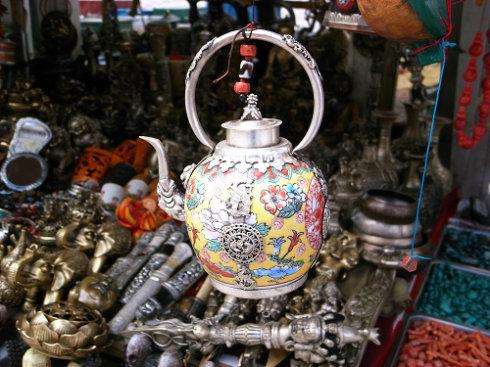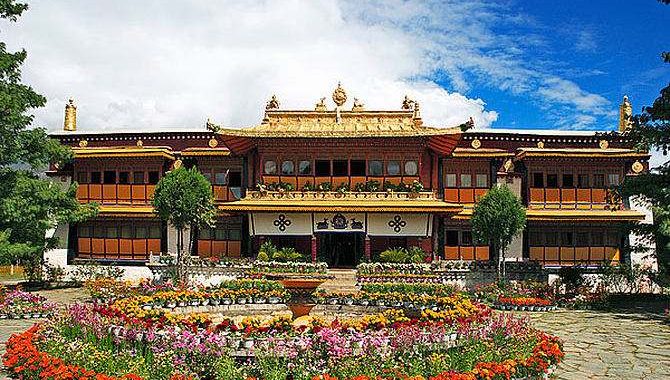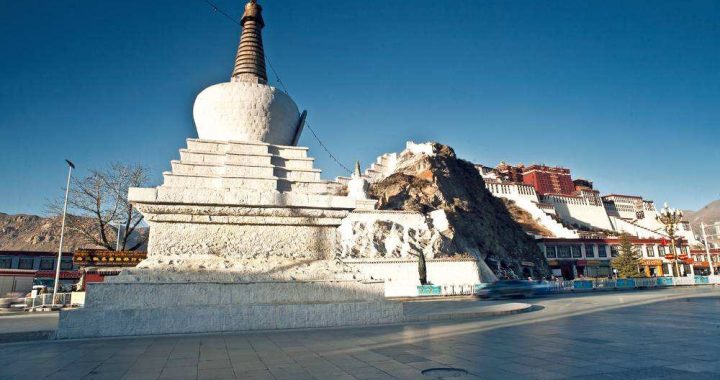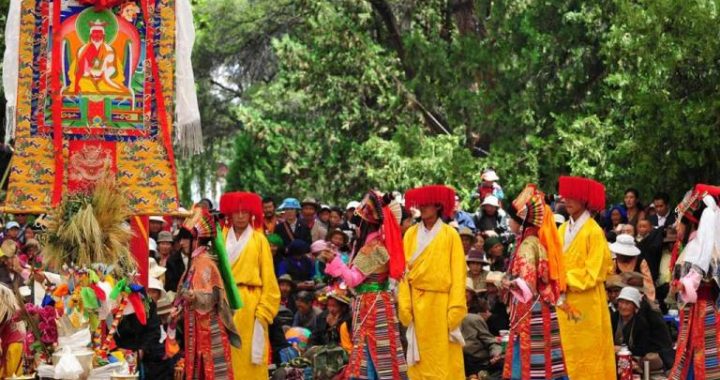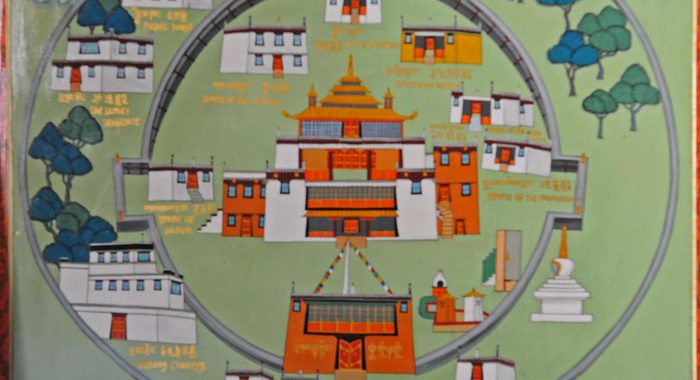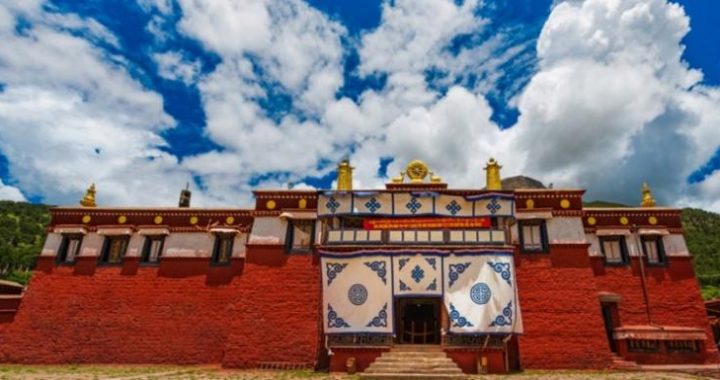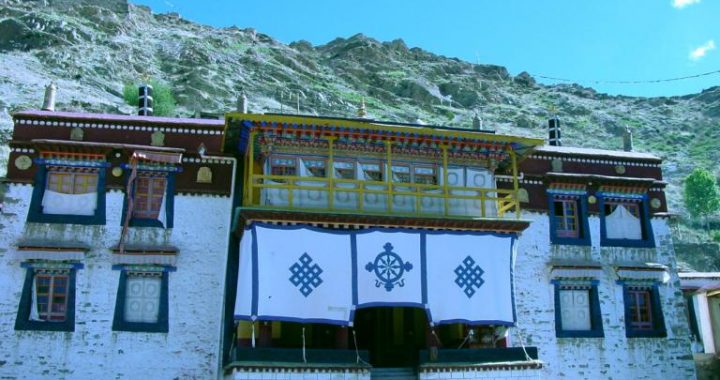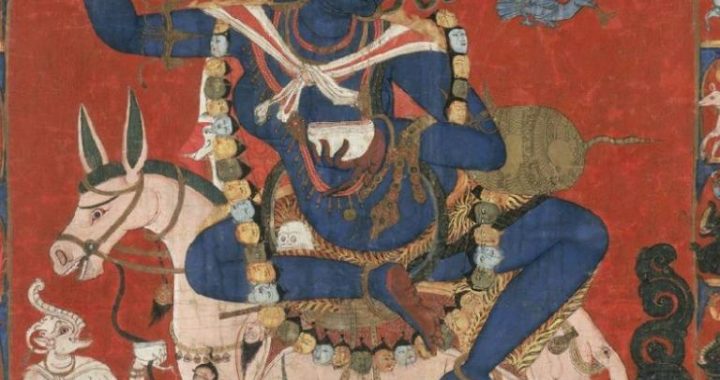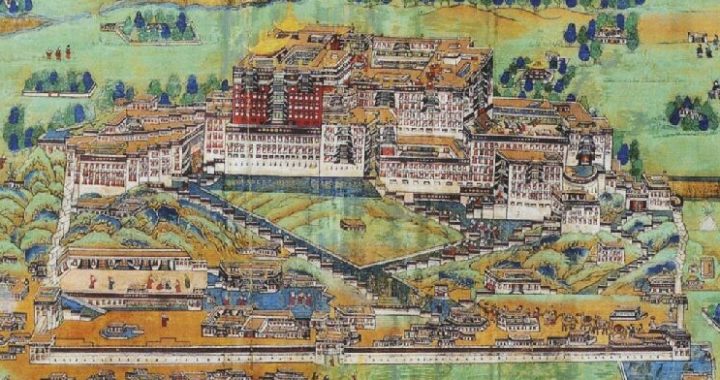The Second Dunhuang in China: Sakya Monastery
7 min readLocated at Sakya County of Xigaze in Tibet, the Tibetan Buddhist temple of the Sakya sect, over 4300 meters above the sea level, is a State-level key preservation unit of cultural relics. Historically the Sakya Monastery is divided into the southern and northern sections with the latter being at foot of the ‘ white sandy ground’ slope of the Mount Benbori, at the northern bank of Chun Qu River and the former being on the plane of the southern bank of the Chun Qu River. The magnificent architectural complex of the two sections composed of 40-odd buildings cover a floors space of 14,700 square meters.A rich collection of cultural relics are housed in the Sakya Monastery reflecting the history, religions, architectural styles and sculpture art in Tibet, therefore this monastery enjoys an importantstatus in Tibetan Buddhism. It is widely known at home and abroad as the second Dunhuang in China.
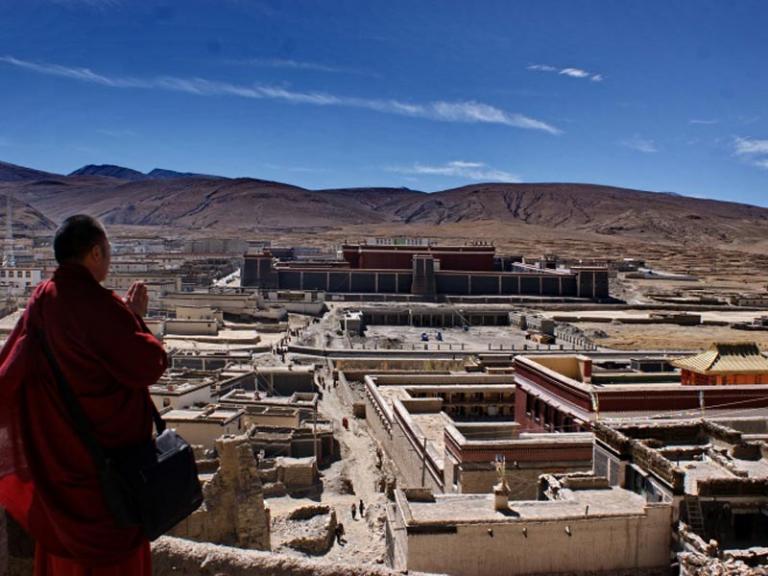
The Northern Sakya Monastery
The Northern Sakya Monastery was established in 1073 by the founder of the Sakya sect,a Tubo aristocrat’s descendant named Khon Konchok Gyalpo. Delighted at the finding that the southern slope of Mount Benbori carries a kind of auspicious luster, Khon Konchok Gyalpo invested to have the Sakya Monastery constructed there. It was initially built on a small scale and got expanded thanks to the endeavor of generation upon generation of Buddhist masters, thus the Northern Sakya Monastery came to assume its present form. Kunga Nyingpo, the son of Khon Konchok Gyalpo, made prominent contributions to the construction of the northern section. From early childhood, he followed his father in learning Buddhism, travelled widely and servedas a disciple of many a guru versed in Buddhist sutras. With a good command of the Exotoric and the Esoteric Buddhism he perfected the Sakya sect’s Lamdre teaching. He was revered as “Sachen”, and the first of the “five forefathers”of Sakya sect.
Kunga Nyingpo not only constructed the Protector Chapel, the Statues Hall andthe Sutra Hall, but also built the main hall of the northern section, the Woze Nyingma Ha11. Expanded by Kunga Nyingpo’s sons Sonam Tsemo and Dragpa Gyaltsen andcovered with the golden roof, the Woze Nyingma Hall presents an impressive sight.B the Yuan dynasty an attaching hall with eight pillars was built in the west of this Hall and that is the traditionally called Woze Sama Hall above which there is theKalachakra Mandala Ha11. Inside the hall there are three exquisitely-made mandalas all dating back to the Yuan dynasty. The birds and animals on the exquisitely-carved door of the Mandala hall look very lifelike so that the door reprensents a rare piece of artistic carving of the Yuan dynasty. Afterwards the hall was expanded by Sakya hierarches. Many new constructions emerged constituting a complicated and overlapping architectural complex on a great scale. As the buildings of the Northern Sakya Monastery were constructed during different periods, they did not follow a uniform deign. Though most of them are scattered on the steep hillsides, they embody the Tibetan architecture reclining on the mountains. It is regrettable that theNorthern Sakya Monastery suffered unrepairable damages with a lot of buildings ruined and a number of cultural relics lost. The existing northern section of the Sakya Monastery has been renovated.
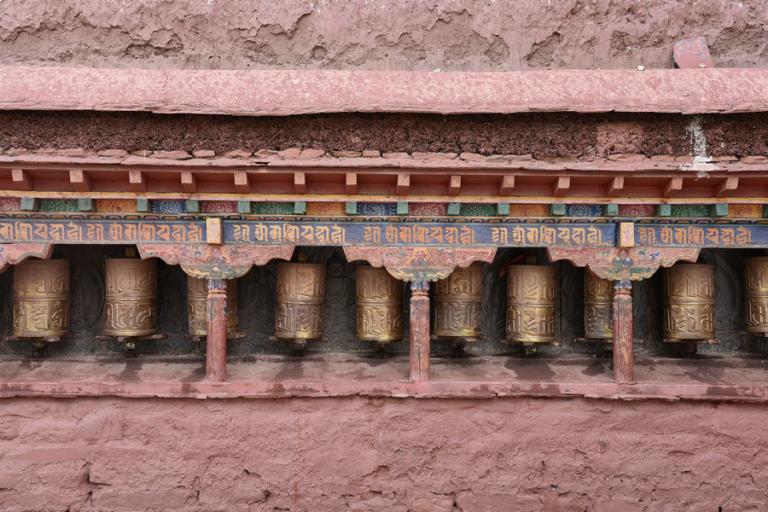
The Southern Sakya Monastery
The Southern Sakya Monastery was constructed in 1268 by Sakya Ponchen Sagya Sangpo at the order of Sakya hierarch Phagspa with all the buildings in the complex completed almost simultaneously, so the layout appears unified and orderly reflecting the architectural style on the plains. It is said that the Buddhism adherents unanimously believed that a temple should be ensured to be fireproof when they were considering the temple site, so they set one cannon on Mount Benbori and another atop Bache Phobrang to explode the rocks of which one block rolled down the mountain and landed in the center of the main hall square. Hardly the stone block hit that spot when water began spurting there, which was interpreted as an auspicious sign by all present, thus it was decided that a temple should be builtthere. In the same year Sagya Sangpo mobilized labors from thirteen myriarches inthe U-Tsang region to construct the Sakya main hall modeling on Jore Lhakang. Its Lhakang Labrang, Richengang Labrang, Ducho Labrang were not completed until Kunga Sangpo became the Ponchen.
As a typical Tibetan fortress complex, the Southern Sakya Monastery altogether covers 14,760 square meters in the rectangular shape with solid walls built of mu mixed with clay on four sides. The outer walls feature stripes in red, white and blue, which distinguish the temples of Sakya sect from those of other sects. Outsidethe bounding walls are the relatively short earth-rammed walls outside which there is a trench built of stone slabs. On the bounding walls there are four watchtowers and atop the parapet walls there are battlements, which obviously have modeled after the defense architecture of the hinterland. The doors of the Southern Sakya Monastery are solid and sturdy; towering defense structures are erected above the gate; there is the sluice gate in the doorway and the passage into the door is narrow and T-shaped; there are many holes at the top of the gate and dust and stones can be thrown through these holes which thus serve defense purposes against enemies.
The Sakya Palace’s two-story main hall is a closed rectangular structure about 10 meters high and covering a space of 5,775 square meters. It is encircled by the 16-meter-high solid walls with a patio in the middle and a stone-paved courtyard in the front; there are many banner poles a few meters high planted in the yard; on the left side of the courtyard’s eastern corridor a stone staircase leads to the second floor; in the south is the stupa shrine of Phuntsok Podrang inside which there are two stupas and statues of Kunga Nyingpo and other people; in the north is the stupa shrine of Drolma Phobrang inside which are five stupas and silver Buddha statues and the like. To the north of the courtyard is “Ngadun Rinzin Lhakang”in which are enshrined eleven stupas of the Sakya hierarches and six clay stupas. The inner walls of the main hall are decorated with the early portraits of Phagspa and frescoes depicting how the Sakya Monastery was constructed.
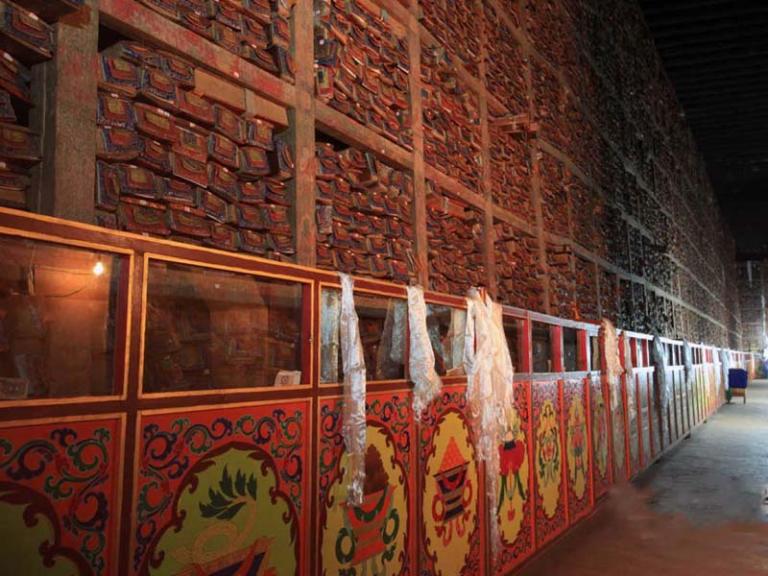
The Cultural and Political Organs in the Sakya Monastery In most cases the local authorities of Tibet take charge of the political andreligious affairs and that is the same with the Sakya regime. Therefore, in the Sakya Monastery there are not only grand temples, but also residences of administrative personnel. In 1265 Phagspa returned to the Sakya Monastery and had Labrang built for the purposes of managing his personal belongings and conducting political affairs. After his death the Labrang was divided by the Khon family of Sakya regime into four sections and the leadership of each section was passed down by the father to his son.
The four Labrangs took turns to be residence of the Sakya hierarch. The four Labrangs have their own functions and characteristics: Karthok Labrang consists of a rectangular courtyard of four stories measuring 56.6 meters long,40 meters wide, and 16.3 meters high; it used to be the official residence of Phagspa when he was incharge of the 13 myriarches in the Tibet and thereafter it has been the seat of theSakya regime. Located inside the right fortress of the southern temple’s sutra hall, the Lhakang Labrang where Phagspa passed away is a roofed three-story building; it stands as high as the Sakya main hall. In addition there are two grand Richengang and Ducho Labrangs of the architectural style reminiscent of the Phagspa Period. Inthe fifteenth century there remained only the Ducho Labrang family since the other three Labrangs died sonless. As the two brothers of Ducho Labrang fought to be Sakya hierarch, which led to the construction of the two palaces Phuntsok Phobrang and Drolma Phobrang which constituted important political constructions of the Sakya Monastery.
The political constructions reflect the integration of the political and religious purposes of the Sakya Monastery, whileits cultural architecture and the valuable cultural relics and documents have won it the reputation of the second Dunhuang in China. Counting from 1073 in which its northern section was built, the Sakya Monastery has a history of more than 900 years and boasts a rich collection of cultural items among which the Buddhist scriptures account for the largest proportion. The libraries in the northern section and the main hall in the southern section have a collection of as many as 24,000 copies of Buddist sutra, so they deserve to be called the three great libraries of the Sakya Monastery. One library in the northern section is the earliest library set within the Sakya Monastery and inside this library there are not only a large number of ancient Tibetan transcriptions, but also a lot of palm-leaf sutras in Sanscript and scriptures in Chinese. One of the only two wel1-known The Zhaocheng Edition of Tripitaka in Chinese is kept in it. Another library in the northern section keeps 3,000 books on astronomy, calendar, medicines, literature and history; many of them are manuscripts or hand-written copies of the Song, Yuan and Ming dynasties. The rare books kept in this library have been annotated by hierarches of the past regimes.
Among all the buildings in the Sakya Monastery the main hall of the southern section has the largest collection of sutras which are said to have been copied by calligraphers across Tibet when Phagspa was the hierarch. The books in the Dharma wall of that hall are best kept where the bookshelves are arranged in the back as we11 as on the left and right sides of the hall. These bookshelves are covered by 20,000-odd copies of Buddhist sutras in various editions and most of them have been written in golden and silver powder and some of the rare copies constitute invaluable cultural heritage. Apart from the valuable scriptures, the elaborately made statues, castings, frescos, ritual objects, Tangkas (Tibetan painted scrolls)porcelains, and relics of hierarches and seals of ancient times are all of great research value. Thus many Chinese experts in relevant fields hold that the sutras and frescoes in the the Sakya Monastery are comparable to those in Dunhuang, so the Sakya Monastery is called the second Dunhuang in China.
